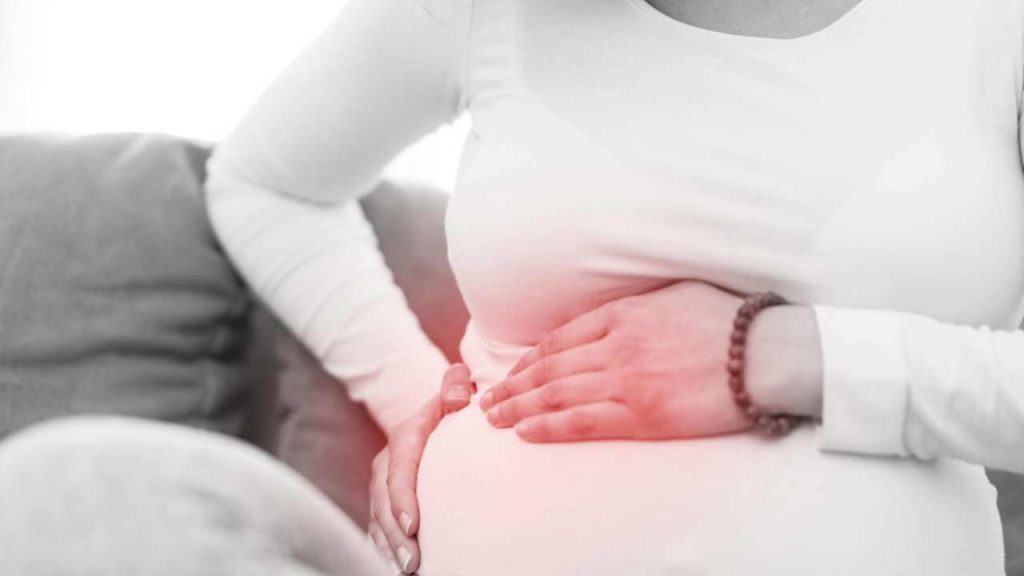
Table of Contents
Key Takeaways: |
Acute Fatty Liver of Pregnancy (AFLP) might not be a household term, but for those who experience it, its impact is profound. AFLP is a rare yet serious condition that occurs exclusively during pregnancy, affecting approximately one in 10,000 to 20,000 pregnancies each year in the United States. Understanding this condition is crucial for expectant parents and healthcare professionals alike, as prompt recognition and intervention can be lifesaving.
What is Acute Fatty Liver Of Pregnancy?
AFLP is a rare but serious condition that affects pregnant individuals. It happens when fat builds up in the liver, making it hard for the liver to work properly. This can happen late in pregnancy or after giving birth and can cause serious problems for both the mother and the baby.
AFLP is caused by genetic problems that affect how the body breaks down fats. This leads to trouble in the mitochondria, which are like the cell’s batteries. When they don’t work right, fat builds up in the liver, causing AFLP.
When fat builds up in the liver, it can cause a lot of issues. The liver can’t do its job properly, which can make the person feel sick with symptoms like nausea, pain, and fatigue. This can also affect other parts of the body, like the kidneys and placenta, making AFLP a serious condition during pregnancy.
Acute Fatty Liver of Pregnancy Symptoms
As AFLP worsens, patients gradually feel sicker. Common symptoms include:
- Nausea or vomiting
- Belly pain
- Feeling very tired and sleepy
- Not wanting to eat
- Yellow skin or eyes in severe cases
Belly pain can feel like what’s seen in HELLP syndrome. If the liver isn’t working well, it can affect the mother’s thinking and the baby’s health. Sadly, symptoms might not be noticed until it’s too late, sometimes after giving birth. In bad cases, dehydration and a fast heartbeat may happen due to low blood volume. Since symptoms often show up late, diagnosis may come after birth.
Diagnosing AFLP
Diagnosing AFLP can be challenging due to its rarity. Typically, an obstetrician-gynecologist (Ob-Gyn) will assess the patient’s symptoms in a clinic or hospital setting, combined with various laboratory tests. Sometimes, AFLP is discovered during an emergency cesarean section due to abnormal fetal heart rate readings. Laboratory tests include checking for abnormal clotting, liver issues, elevated serum ammonia, very low blood sugar, high serum uric acid levels, and signs of kidney damage.
Interestingly, about half of Acute Fatty Liver of Pregnancy cases initially mimic preeclampsia until further testing confirms the AFLP diagnosis. Like preeclampsia and HELLP syndrome, AFLP can manifest differently in each patient, complicating diagnosis.
Difference Between AFLP and HELLP Syndrome
Distinguishing AFLP from HELLP syndrome and other forms of preeclampsia relies on discerning developmental disparities between the two conditions. Despite sharing similar symptoms, their contrasts become evident through blood work and variations in laboratory values.
The primary disparity lies in clotting ability and platelet levels. AFLP typically triggers more abnormal clotting problems, whereas HELLP syndrome sees a gradual decline in platelet count over time.
Furthermore, patients with HELLP syndrome often exhibit:
- Elevated blood pressure levels
- Better clotting ability until platelet counts drop significantly
- Normal blood glucose levels
- Less severe abnormalities in liver function tests
- Normal to slightly raised uric acid levels
- Unaltered mental status
- Absence of acidosis or significant brain function compromise without seizure or stroke
- Less frequent kidney function compromise compared to AFLP
Additionally
- Kidney function impairment is more common in AFLP than HELLP syndrome
- Acute Fatty Liver of Pregnancy leads to higher bilirubin levels in laboratory tests compared to HELLP syndrome
- Hypertension may not be present in AFLP patients, although proteinuria is common
- AFLP and HELLP syndrome exhibit discrepancies in kidney function compromise, bilirubin levels, and presence of hypertension alongside proteinuria.
How Should AFLP be Treated?
The recommended treatment for AFLP revolves around addressing the liver injury and failure experienced by the mother. Swift delivery of the baby, often through cesarean section, is advised after the mother undergoes appropriate evaluation and stabilization. This step initiates the mother’s recovery process as the placenta, which contributes to the disease, is removed from her body.
Given the potential for complications and the need for intensive care, referral to a specialized maternity facility may be necessary before or shortly after delivery. Recovery from AFLP can be prolonged, spanning several days to weeks, during which time various complications may arise. Access to multidisciplinary intensive care, transfusion products, and round-the-clock medical specialists is essential for managing these complexities effectively.
Risks Related to AFLP
If Acute Fatty Liver of Pregnancy isn’t caught early or if diagnosis is delayed, the mother can get very sick. The risks related to undiagnosed AFLP can lead to problems like liver and kidney failure, breathing issues, and hard-to-stop bleeding. If the mother’s acidity level stays high for too long, it can affect the baby’s health.
AFLP is rare and can look like HELLP syndrome, making it tough for doctors to diagnose quickly. Even with the best care, managing AFLP and its complications often needs specialized treatment in intensive care units. Sometimes, doctors use plasma exchange to help, or in severe cases, a liver transplant might be needed.
Luckily, thanks to better medical care, the risk of the mother dying from AFLP is much lower now, about five percent. This risk can drop even more with prompt diagnosis and treatment. After delivery, the mother’s liver usually gets back to normal within a week or two, but it might take longer for some.
Conclusion
Recognizing the Acute Fatty Liver of Pregnancy symptoms is crucial for timely diagnosis and intervention. From nausea and abdominal pain to jaundice and fatigue, these symptoms may initially seem common during pregnancy but can signify a serious underlying condition. Prompt medical attention is essential to prevent complications for both the mother and the baby. With increased awareness and understanding of AFLP symptoms, healthcare providers and expectant mothers can work together to ensure early detection and appropriate management, ultimately leading to improved outcomes and the well-being of both mother and child.










